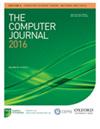Lattice-Based Homomorphic Encryption For Privacy-Preserving Smart Meter Data Analytics
IF 1.5
4区 计算机科学
Q4 COMPUTER SCIENCE, HARDWARE & ARCHITECTURE
引用次数: 0
Abstract
Abstract Privacy-preserving smart meter data collection and analysis are critical for optimizing smart grid environments without compromising privacy. Using homomorphic encryption techniques, smart meters can encrypt collected data to ensure confidentiality, and other untrusted nodes can further compute over the encrypted data without having to recover the underlying plaintext. As an illustrative example, this approach can be useful to compute the monthly electricity consumption without violating consumer privacy by collecting fine-granular data through small increments of time. Toward that end, we propose an architecture for privacy-preserving smart meter data collection, aggregation and analysis based on lattice-based homomorphic encryption. Furthermore, we compare the proposed method with the Paillier and Boneh–Goh–Nissim (BGN) cryptosystems, which are popular alternatives for homomorphic encryption in smart grids. We consider different services with different requirements in terms of multiplicative depth, e.g. billing, variance and nonlinear support vector machine classification. Accordingly, we measure and show the practical overhead of using the proposed homomorphic encryption method in terms of communication traffic (ciphertext size) and latency. Our results show that lattice-based homomorphic encryption is more efficient than Paillier and BGN for both multiplication and addition operations while offering more flexibility in terms of the computation that can be evaluated homomorphically.基于格的同态加密保护智能电表数据分析
保护隐私的智能电表数据收集和分析对于在不损害隐私的情况下优化智能电网环境至关重要。使用同态加密技术,智能电表可以加密收集的数据以确保机密性,其他不受信任的节点可以进一步计算加密的数据,而不必恢复底层的明文。作为一个说明性示例,这种方法可以用于计算每月用电量,而不会通过小的时间增量收集细粒度数据,从而侵犯消费者的隐私。为此,我们提出了一种基于格同态加密的隐私保护智能电表数据收集、聚合和分析体系结构。此外,我们将所提出的方法与Paillier和Boneh-Goh-Nissim (BGN)密码系统进行了比较,这两种密码系统是智能电网中常用的同态加密替代方案。我们根据乘法深度考虑不同需求的不同业务,例如计费、方差和非线性支持向量机分类。因此,我们在通信流量(密文大小)和延迟方面测量并展示了使用所提出的同态加密方法的实际开销。我们的结果表明,基于格的同态加密在乘法和加法运算方面比Paillier和BGN更有效,同时在同态计算方面提供了更大的灵活性。
本文章由计算机程序翻译,如有差异,请以英文原文为准。
求助全文
约1分钟内获得全文
求助全文
来源期刊

Computer Journal
工程技术-计算机:软件工程
CiteScore
3.60
自引率
7.10%
发文量
164
审稿时长
4.8 months
期刊介绍:
The Computer Journal is one of the longest-established journals serving all branches of the academic computer science community. It is currently published in four sections.
 求助内容:
求助内容: 应助结果提醒方式:
应助结果提醒方式:


